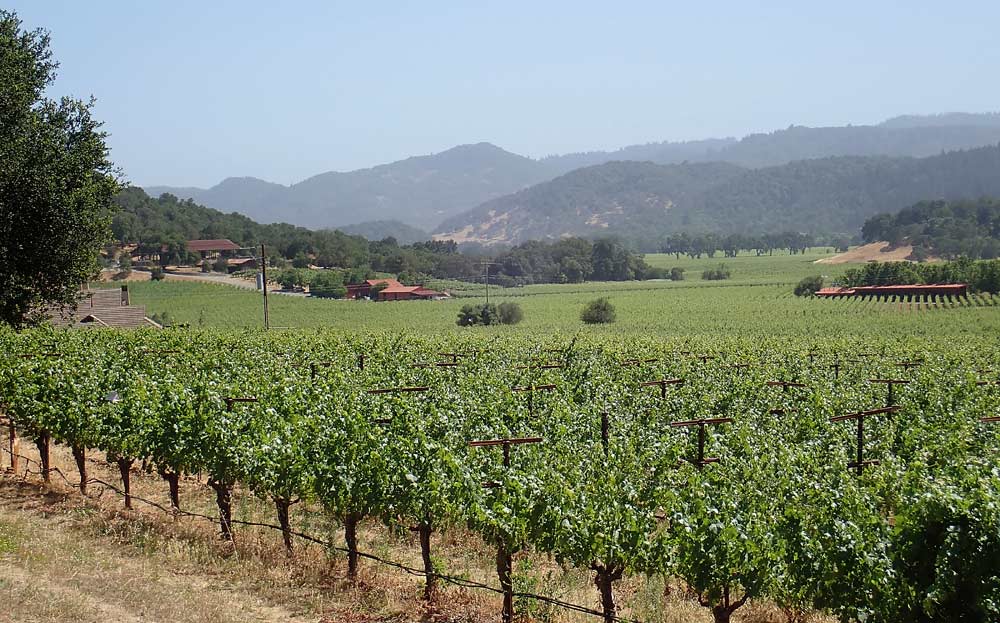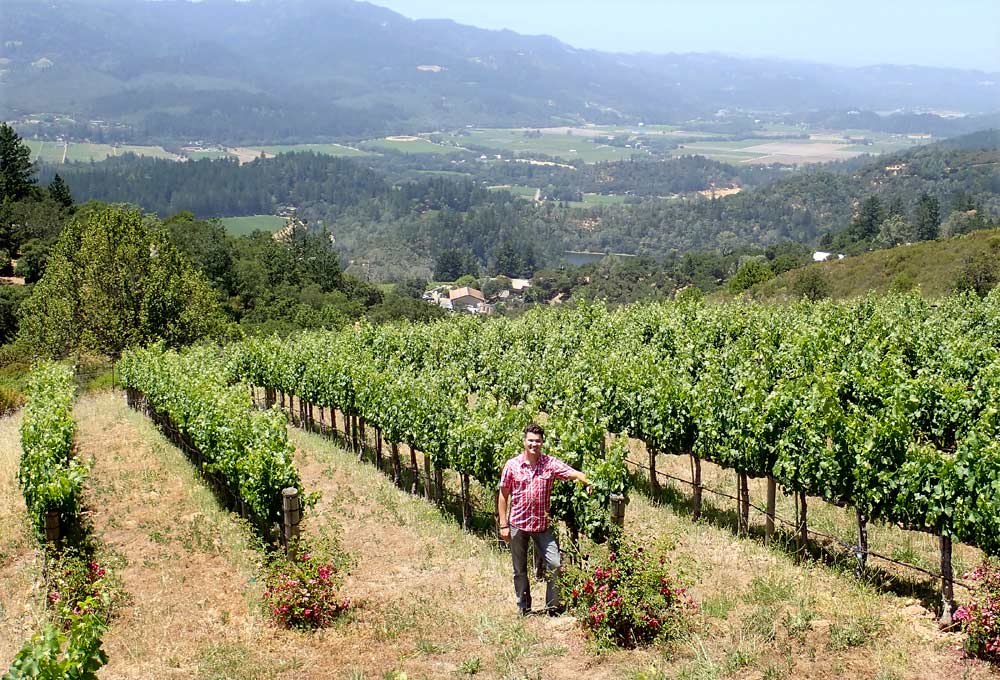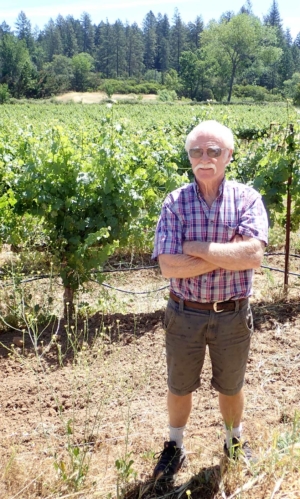
California’s Napa Valley, one of the world’s premier viticultural regions famed for its prized Cabernet Sauvignon, is home to more than 400 wineries.
(Leslie Mertz/for Good Fruit Grower)
A ballot referendum early this summer almost put limits on California’s world-renowned Napa vineyards.
Called Measure C, the full referendum ran 16 pages long and included wording that initiated a permitting system for the cutting of oak trees in the agricultural-watershed zoning district, which includes the hills around Napa Valley, once 795 additional acres of oak woodland had been removed from the county.
Since the bulk of the plantable land in Napa is oak woodland in that zoning district, it would have restricted future vineyard development there.
Proponents claimed the measure was necessary to preserve the woodlands and protect the watershed. Opponents argued that the county already has very strong agricultural and environmental regulations in place, and the added restrictions in Measure C were not science-based.
After weeks of heated arguments that saw many growers and winemakers vehemently opposed, but some strongly behind the proposal, Measure C lost by just 641 votes of the 35,707 cast.
Measure C may be over, but as questions about water use and available groundwater become more common, it may well be a harbinger of similar efforts in California and beyond. Measure C proponent Jim Wilson noted that some environmental groups have already contacted him and other drafters of the measure as they consider embarking on similar efforts in nearby Sonoma and Mendocino counties.

Napa vineyardist Ralph Hertelendy of Hertelendy Vineyards, shows off the view over the 4-acre, mountainside property he purchased in 2014. He opposed Measure C, saying it would have placed unnecessary restrictions on the already heavily restricted agricultural community. (Leslie Mertz/for Good Fruit Grower)
Grower vs. grower
One of the voices against Measure C was Napa vineyardist Ralph Hertelendy of Hertelendy Vineyards, a 4-acre, mountainside plot. The biggest problem with Measure C, he said, was that it would have driven land costs to exorbitant heights, leaving small, new growers in the lurch.
“Only 9 percent of Napa is planted vineyard, and if you landlock Napa further to basically say you can no longer plant another vineyard here, what do you think is going to happen to land prices? This measure basically pitted those who are already established against those who are starting out and hungry, because in effect it would price out the little guys like me who don’t have the crazy amount of money (to get started).”
Napa Valley is already one of the most regulated agricultural communities in the world, he said. For example, the 1968 establishment of the Napa County Agricultural Preserve set a minimum 20-acre parcel size for approximately 12,000 acres of valley floor, and other regulations since then demand growers obtain permits and perform costly engineering studies to plant vines on hillsides.
Sweeping his arm toward a small, unplanted area of his property, he said it would probably cost $50,000-plus just for engineering studies to plant there, would require special permits and take at least two years. “ So my point is that it’s already really hard to grow on your own property,” he said.
Warren Winiarski, owner of Arcadia Vineyards and founder and former proprietor of Stag’s Leap Wine Cellars, both in Napa Valley, took a different view. He was one of the supporters of the Agricultural Preserve back in 1968, and he also stood behind Measure C in 2018.
“The Ag Preserve prevented Napa County from undergoing the same kind of transformation that took place in the Santa Clara Valley in San Jose, which was completely taken over by housing,” he said, pointing out that the preserve also protected the groundwater reservoir by reducing water demand.
A half-century later, Winiarski felt Measure C was needed to curtail water usage for two main reasons: 1) a changing climate is reducing winter snowfall, which is one of the main sources of water in Napa, and 2) growers have switched to closer spacing for their vines, which has increased the need for supplemental watering.
“In 1968, I don’t think there was a single vineyard that was irrigated in the valley floor, except for the first year to establish the rootstock, and now I don’t think there’s a single vineyard in the valley that’s not on drip irrigation,” he said. “If you don’t think there’s a train wreck coming by unlimited use of a limited resource, then you have to start thinking again.”
California already has instituted a 2014 Sustainability Groundwater Management Act, which requires that designated high- and medium-priority basins (including Napa, as well as a wide swath of central California) “halt overdraft and bring groundwater basins into balanced levels of pumping and recharge.”
When it comes to the water-use issue, Winiarski said, “If the agricultural community doesn’t regulate itself, the possibility is very strong that someone will regulate it in a more negative way.”

Randy Dunn of Dunn Vineyards supported Measure C because he believes the oak woodlands need protecting, especially from wealthy individuals who are buying up too much land for new vineyards without proper regard for the effect the vineyards could have on the environment. He was disappointed when the measure failed. When asked whether he or other proponents of Measure C might pursue other actions to limit vineyard expansion, Dunn smiled and said, “I’m not saying. You’ll have to wait and see.” (Leslie Mertz/for Good Fruit Grower)
Water debate
For Ryan Klobas, CEO of the Napa County Farm Bureau, Measure C was the wrong approach to watershed issues. For one thing, he said, the measure lacked objective or impartial science to demonstrate its need. “We repeatedly asked for science to back this up and never received it.”
Hertelendy agreed about the need for science; for instance, the 795-acre number in the proposal seemed arbitrary. He said proponents described it as a “reasonable amount,” but provided no further justification.
The number was actually an extrapolation based on the Napa County 2005-2030 general plan, according to proponent Wilson, a retired lab manager/beer brewer from Anheuser-Busch and now a self-described “climate educator” involved with the grassroots climate organization called 350.org.
The general plan spells out 10,000 acres of vineyard growth over its 25-year span, he said, so he and the other Measure C drafters referred to detailed county data showing 4,300 acres of various habitat types had already been converted to vineyards, 14 percent of which were oak woodlands. Measure drafters took 14 percent of the remaining 5,700 acres to arrive at the 795 number.
The Farm Bureau also felt the Napa County Board of Supervisors — and not a referendum — was a more appropriate way to approach watershed management discussions, Klobas said. “We said all along that if there’s a problem, let’s identify the problem and let’s have a process that is science-based, evidence-based, data-driven, that is objective and impartial.”
Shortly after the Measure C election, the Board of Supervisors launched a process for developing the county’s three-year strategic plan; that will include issues brought up during the Measure C campaign, he said.
Wilson said he will be watching the Board of Supervisors discussions about oak woodlands and the watershed.
“I am cautiously optimistic because I do have hope. I do have hope, for example, that we will stop cutting down our forests in the Amazon, that we will stop cutting down our forests in Indonesia for palm oil, and that we will stop cutting down our forests in the Congo basin for cocoa. And here, we’re going to have to stop cutting down our forests for wine. That’s just the way it is.”
Regarding limits on the removal of oak woodlands in Napa, Wilson said. “If the supervisors can do that, well, more power to them. If they can’t do it, then we’ll have to come back. We have plenty of financial backing and more enthusiasm and determination than ever to get it done.”
But this isn’t just a Napa issue, Winiarski said. Climate change is affecting groundwater at the same time that the demand for water is increasing, so something is going to have to give.
“It just doesn’t make sense that you can draw from a limited resource in an unlimited way,” he said. For growers, that means more engagement with their surrounding communities. “We all have to be working cooperatively to find solutions to this problem by thinking ahead of the problem before it gets to us.”
The full initiative can be found at https://bit.ly/2PkS4aI
—by Leslie Mertz






Leave A Comment